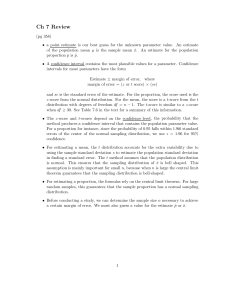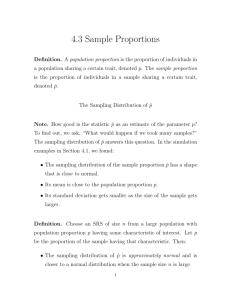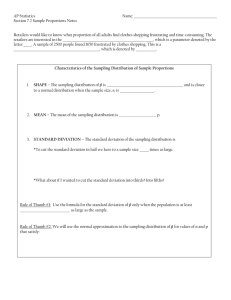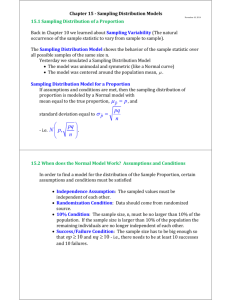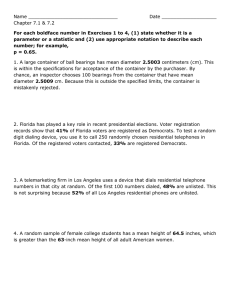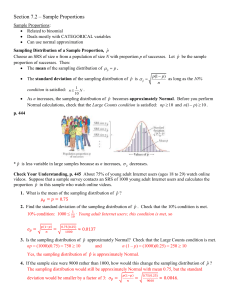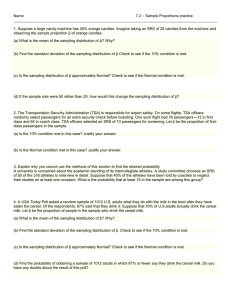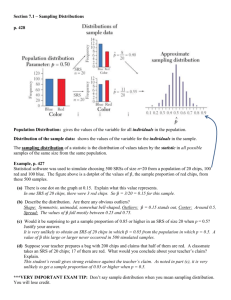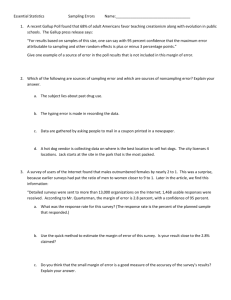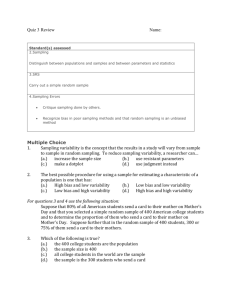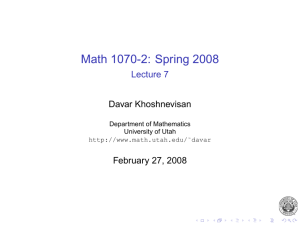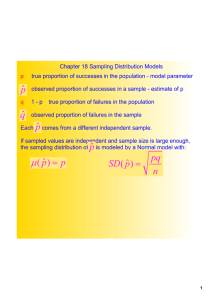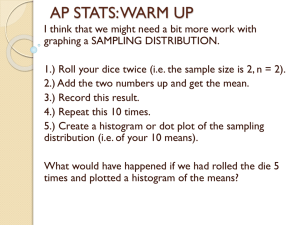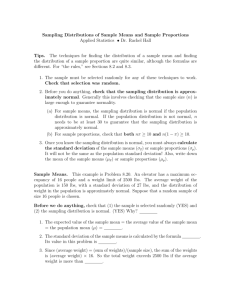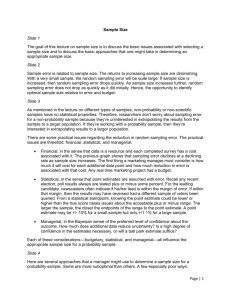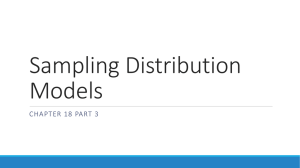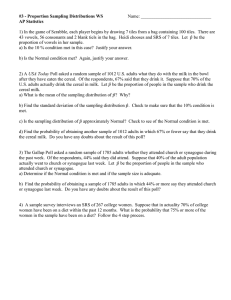9-2 Day 1
advertisement
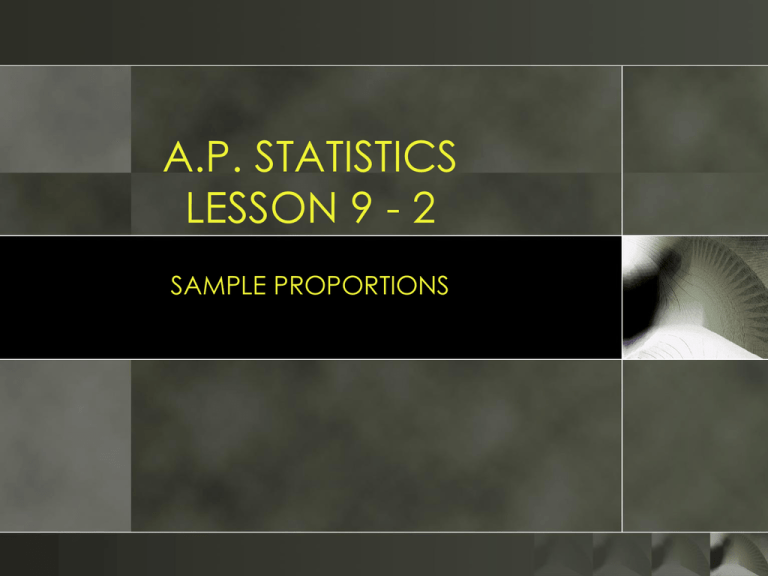
A.P. STATISTICS LESSON 9 - 2 SAMPLE PROPORTIONS ESSENTIAL QUESTION: What are the tests used in order to use normal calculations for a sample? Objectives: To define the rules of thumb so that the normal curve may be used for calculating proportions from a sample. When a sample can use normal calculations in the formula for the p and σ. The Sampling Distribution of p The sample proportion p is the statistic that we use to gain information about the unknown population parameter p. Since values of X and p will vary in repeated samples, both X and p are random variables. Provided that the population is much larger than the sample (say at least 10 times ), the count X will follow a binomial distribution. Sampling Distribution of a Sample Proportion Choose an SRS of size n from a large population proportion p having some characteristic of interest. Let p be the proportion of the sample having that characteristic. Then: The mean of the sampling distribution is exactly p. Sampling Distribution of a Sample Proportion The standard deviation of the sample distribution is: √ p( 1 – p)/n Rule of Thumb #1 Use the recipe for the standard deviation of p only when the population is at least 10 times as large as the sample. Rule of Thumb #2 We will use the normal approximation to the sampling distribution of p for values of n and p that satisfy np ≥ 10 and N( 1- p) ≥ 10 Example 9.7 page 507 Applying to College A polling organization asks an SRS of 1,500 first-year college students whether they applied for admission to any other college. In fact, 35% of all first-year students applied to colleges besides the one they are attending. What is the probability that the random sample of 1,500 students will give a result within 2 percentage points of this The normal approximation to the true value? sampling distribution of p. Example 9.8 page 509 Survey Undercoverage? One way of checking the effect of undercoverage, nonresponse, and other sources of error in a sample is to compare the sample with known facts about the population. About 11% of American adults are black. The proportion p of blacks in a SRS of 1,500 adults should therefore be close to .11. It is unlikely to be exactly .11 because of sampling variability. If a national sample contains only 9.2 % blacks, should we suspect that the sampling procedure is somehow underrepresenting blacks?

